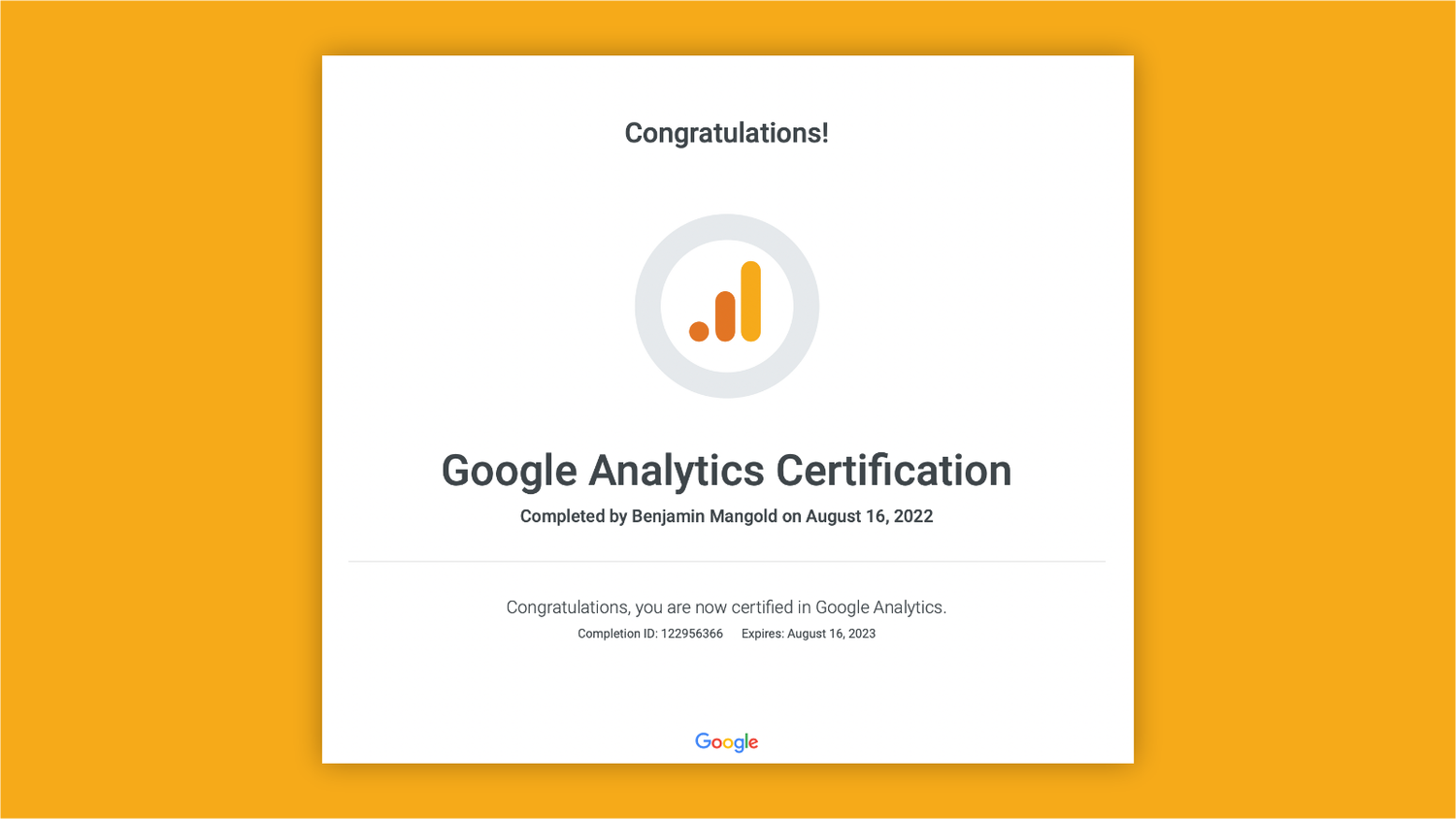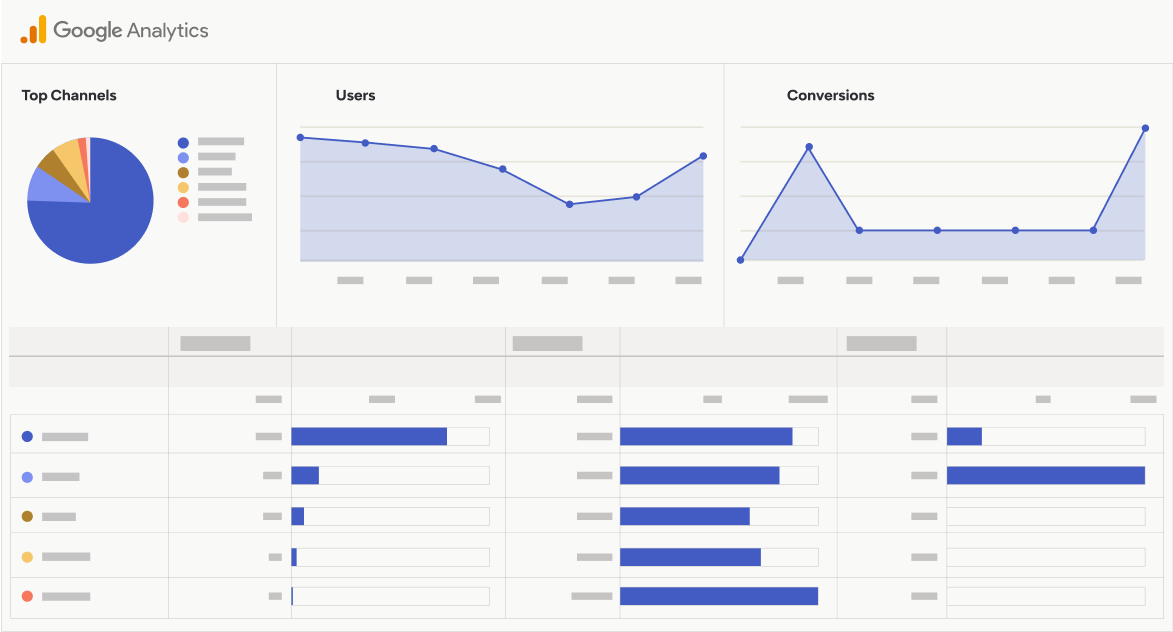In-depth Introduction: What Info Google Analytics Does Not Allow for Collection
In-depth Introduction: What Info Google Analytics Does Not Allow for Collection
Blog Article
Leveraging Google Analytics for In-Depth Insights Into User Behavior and Interaction
In the digital landscape where individual habits and involvement hold the vital to online success, leveraging tools like Google Analytics has become critical for services looking for to comprehend their audience's interactions with their platforms. This sophisticated analytics platform offers a wealth of data that can unveil intricate details concerning just how customers browse internet sites, involve with web content, and inevitably transform - what data does google analytics prohibit collecting. By using Google Analytics, organizations can discover important insights that go beyond surface-level metrics, offering a thorough understanding of customer actions and choices
Comprehending Individual Behavior Via Google Analytics
Making use of Google Analytics supplies a detailed understanding of user behavior on electronic platforms. By evaluating data such as the variety of site visitors, their geographic locations, the web pages they go to, and the actions they take, businesses can gain beneficial understandings into just how individuals communicate with their applications or internet sites. This info permits educated decision-making, making it possible for organizations to optimize their on-line existence for enhanced user experience and engagement.
One trick aspect that Google Analytics assists to uncover is user traffic patterns. By tracking metrics like the resource of traffic, recommendation links, and prominent search phrases, services can determine what drives users to their system. what data does google analytics prohibit collecting. This understanding aids in customizing advertising and marketing methods to target specific demographics or rate of interests effectively
Moreover, Google Analytics offers in-depth records on user involvement, showcasing metrics like bounce prices, session durations, and conversion prices. Recognizing these metrics offers beneficial feedback on the efficiency of web content, design, and general customer experience, empowering services to make data-driven improvements and drive better outcomes. Essentially, Google Analytics works as an effective device for decoding individual behavior and maximizing digital platforms for success.
Analyzing Internet Site Website Traffic Patterns
Recognizing the flow of website traffic on a site is essential for maximizing its performance and improving individual engagement. Assessing web site web traffic patterns provides useful understandings right into how customers interact with the website, what web content they locate most engaging, and where they may be coming across barriers. By leveraging devices like Google Analytics, website owners can track metrics such as page views, unique visitors, bounce prices, and ordinary session period to get a comprehensive understanding of user behavior.
Researching website traffic resources is essential in identifying where visitors are coming from, whether via natural search, social media sites, recommendations, or direct traffic. This information helps in customizing advertising and marketing methods to target details target markets efficiently. Additionally, analyzing the actions circulation within the web site can highlight prominent landing web pages, departure pages, and one of the most typical paths customers take with the site. Recognizing these patterns allows site owners to make enlightened choices about web content placement, navigating enhancements, and overall website style to boost individual experience and drive conversions.
Monitoring User Interaction Metrics
To grow the understandings acquired from examining internet site traffic patterns, it is imperative to concentrate on monitoring user interaction metrics. Individual interaction metrics supply beneficial information concerning how visitors communicate with a website, suggesting the level of passion and fulfillment with the web content. By tracking metrics such as bounce price, ordinary session period, web pages per session, and conversion prices, internet site owners can understand the effectiveness of their content and user experience.
Bounce rate determines the portion of visitors who navigate away from the site after seeing only one additional resources page, indicating whether the content is relevant and engaging. Average session period discloses just how much time site visitors invest on the website, showing their level of rate of interest. Pages per session metric shows the ordinary variety of web pages site visitors check out throughout a session, suggesting the depth of exploration. Conversion prices track the percentage of visitors that finish a wanted activity, such as making an acquisition or filling up out a type, mirroring the effectiveness of the site in driving user actions. By evaluating these user engagement metrics, website proprietors can make educated decisions to optimize their web content and customer experience to boost involvement and accomplish their goals.
Identifying Conversion Opportunities
Recognizing prospective conversion opportunities is an essential facet of optimizing web site performance and accomplishing wanted user activities. Via Google Analytics, companies can reveal useful understandings that can help in determining locations where users are going down off or otherwise proceeding to the wanted conversion actions. By assessing metrics such as conversion rates, landing web page efficiency, and user flow, services can determine potential bottlenecks in the conversion procedure.

Furthermore, utilizing Google Analytics' habits flow function can offer a graph of just how customers navigate via the site. This can aid in determining preferred pathways along with any barricades that may be impeding conversions. By leveraging these understandings, services can maximize their site for boosted user experience and boosted conversion rates.
Enhancing User Experience With Data-Driven Insights
By leveraging data-driven understandings from Google Analytics, businesses can purposefully maximize their site to enhance individual experience and drive higher conversion rates. Recognizing customer actions via information analysis permits companies to customize their sites to satisfy the details needs and preferences of their target market. By recognizing key wikipedia reference metrics such as bounce rates, session duration, and prominent web pages, businesses can acquire beneficial understandings into how individuals engage with their website.
Google Analytics gives detailed information on user demographics, gadgets utilized, and also the certain activities tackled the internet site. This information enables businesses to make educated decisions on site Discover More style, material placement, and general individual flow. By leveraging these insights, companies can create a more appealing and individualized individual experience, resulting in boosted fulfillment and commitment.
Moreover, data-driven insights can assist companies determine pain factors in the customer trip and carry out targeted enhancements to improve the conversion process. By continually keeping track of and evaluating customer habits, companies can adapt and maximize their web site to guarantee a satisfying and seamless experience for site visitors, eventually driving higher conversion rates and optimizing company success.

Final Thought
Finally, Google Analytics gives useful understandings into user behavior and interaction on web sites. By examining web traffic patterns, tracking interaction metrics, and determining conversion chances, organizations can make data-driven choices to boost the customer experience. Leveraging these understandings can result in enhanced site performance and increased conversions.
By tracking metrics such as bounce rate, ordinary session period, pages per session, and conversion prices, internet site proprietors can comprehend the efficiency of their content and user experience.
Conversion prices track the portion of visitors who complete a wanted activity, such as making a purchase or filling out a type, showing the effectiveness of the website in driving customer actions. By examining these user engagement metrics, internet site proprietors can make informed choices to enhance their content and customer experience to boost interaction and achieve their objectives.
By leveraging these insights, companies can maximize their web site for improved customer experience and enhanced conversion prices.
By leveraging data-driven insights from Google Analytics, businesses can purposefully optimize their internet site to improve user experience and drive greater conversion rates.
Report this page